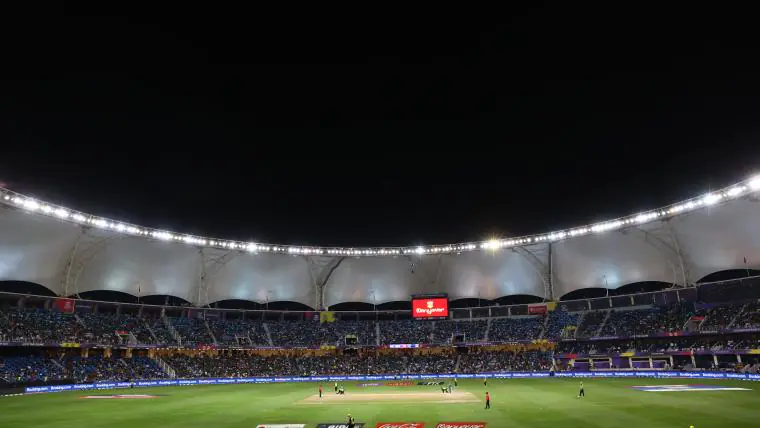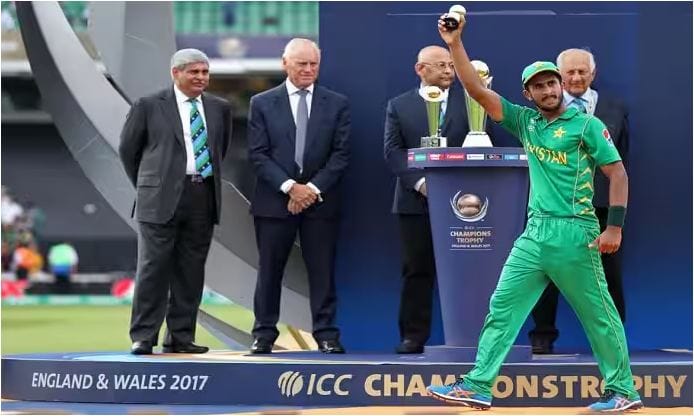
In the fast-paced world of cricket, fielding has evolved from a mere supportive role to a game-changing force that can make all the difference in high-stakes contests. While batting and bowling often steal the limelight, it’s often a stunning catch, a crucial run-out, or a perfectly timed save that shifts the momentum in tight matches. The ICC Champions Trophy, known for its pressure-packed games, has witnessed several instances where exceptional fielding has turned the tide, leaving fans in awe and opponents in disbelief.
Over the years, we’ve seen the art of fielding grow, with players now regarded as specialists in this key aspect of the game. From miraculous direct hits to acrobatic catches, fielding has become a decisive factor that can turn the course of a match—no more evident than in past ICC Champions Trophy tournaments where a single act of brilliance in the field has led to unforgettable victories.
The Importance of Fielding in Limited-Overs Cricket
Fielding in limited-overs cricket, especially in high-pressure tournaments like the ICC Champions Trophy, is more than just a routine part of the game—it’s a vital weapon. In a format where every ball counts and the margins are razor-thin, a single moment of fielding brilliance can turn a match on its head. Whether it’s saving crucial runs, executing a run-out at a key moment, or taking a spectacular catch, fielding often provides the game-changing moments that can swing momentum in favor of a team.
Saving runs through sharp stops, quick reactions, and pinpoint throws is an underrated skill, but in a tournament like the ICC Champions Trophy, it can make all the difference. A boundary saved in the deep or a dive that prevents a single from turning into a two can add immense pressure on the batting side. Strong fielding not only prevents runs but also builds psychological pressure on the opposition, often forcing them into making mistakes. The tension escalates, particularly when teams are chasing or defending narrow targets in high-stakes encounters.
The significance of fielding has been on full display in previous Champions Trophy editions. For instance, in the 2013 final, Ravindra Jadeja’s sharp fielding was crucial in preventing vital runs and maintaining pressure on England’s batsmen during a rain-affected thriller. Jadeja’s quick reflexes and accuracy in the field gave India the upper hand, with his contributions often going unnoticed but crucial nonetheless. Similarly, during the 2004 Champions Trophy, South Africa’s stunning fielding, including incredible catches and direct-hit run-outs, played a pivotal role in their semifinal victory over the West Indies. These moments emphasize just how fielding can shape the destiny of a match in limited-overs cricket, providing a stark reminder that the game is never over until the last ball is bowled—and every run saved and catch taken counts.
Teams Known for Exceptional Fielding
In ICC tournaments, fielding prowess often sets the best teams apart. Some teams have built a reputation for their athleticism, sharp reflexes, and unwavering commitment to fielding, making it an essential part of their strategy.
Australia
Australia has long been recognized for its exceptional fielding, driven by athleticism and sharp field awareness. Players like Glenn Maxwell, David Warner, and the legendary Andrew Symonds (in past editions) have set high standards in the field. In both the 2006 and 2009 editions of the Champions Trophy, Australia’s diving catches, boundary-saving efforts, and impeccable throws from the deep proved to be pivotal in their victories. Their ability to execute under pressure made fielding a key contributor to their success.
South Africa
South Africa has earned its reputation as one of the best fielding units in cricket history. Players like Jonty Rhodes, AB de Villiers, and Faf du Plessis have epitomized what it means to be elite in the field. Rhodes, often credited as the pioneer of modern fielding, set the benchmark with his acrobatic stops and lightning-fast run-outs. His iconic run-out against Pakistan in the 1992 World Cup remains one of the most memorable moments in cricket history, showcasing the high standards of South African fielding.
India
India’s fielding has seen remarkable improvement over the last two decades, evolving from a traditional weakness to a major strength. Players like Ravindra Jadeja, Suresh Raina, and Virat Kohli have helped elevate India’s fielding standards. Jadeja, particularly, became a standout during the 2013 Champions Trophy with his quick reflexes and diving stops, earning him the “Man of the Tournament” award. His fielding was instrumental in India’s success, especially in crucial moments.
New Zealand
New Zealand’s fielding is defined by their collective commitment to excellence, with players like Martin Guptill, Kane Williamson, and Trent Boult leading the charge. Their exceptional work in the 2019 World Cup—especially Guptill’s direct-hit run-out against India—highlighted their ability to shine in critical moments. This collective effort has been a hallmark of New Zealand’s performances in past ICC tournaments, continuing their legacy as one of the most disciplined and efficient fielding teams.
Iconic Fielding Moments in ICC Champions Trophy History
Jonty Rhodes’ Run-Out Against India (2002)
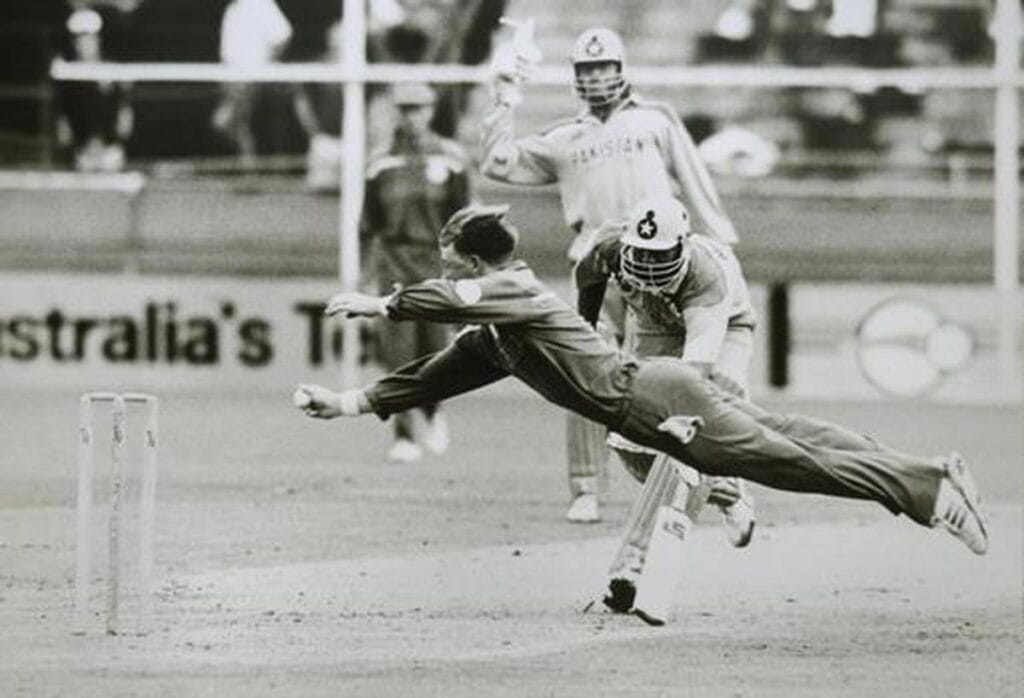
One of the most iconic fielding moments in ICC Champions Trophy history came in 2002, when Jonty Rhodes produced a breathtaking run-out against India. Positioned in the deep, Rhodes sprinted across the field and, with a lightning-fast throw, hit the stumps direct, sending back India’s batsman. This moment not only showcased Rhodes’ athleticism but also his cricketing acumen, making it a turning point in the game. His quick reflexes and awareness under pressure became a gold standard for fielding and a prime example of how a single act can shift momentum in high-stakes matches.
Ravindra Jadeja’s Boundary Saves (2013 Final)
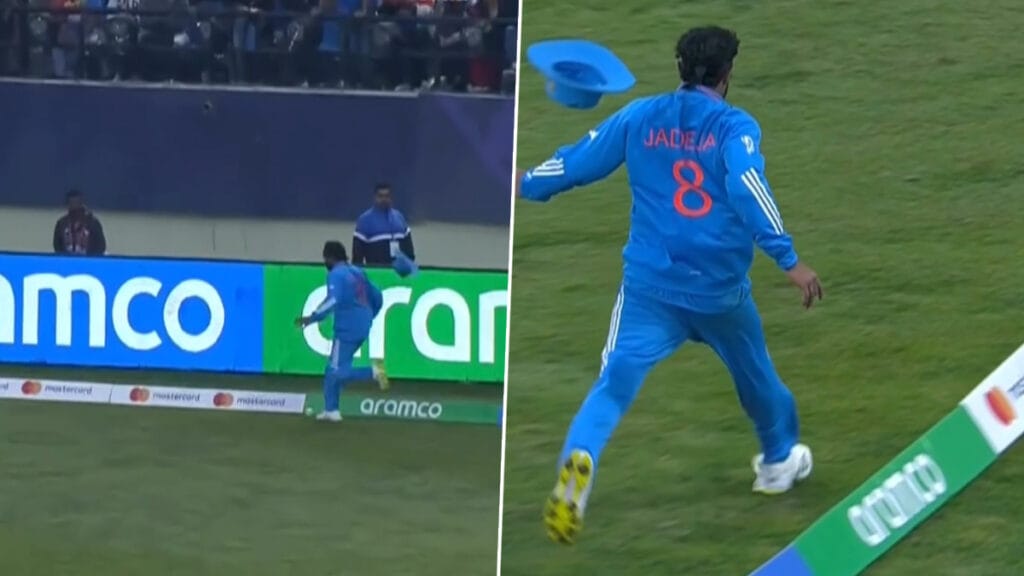
In the 2013 ICC Champions Trophy final, Ravindra Jadeja played a pivotal role in India’s narrow victory over England with his exceptional fielding. Throughout the match, Jadeja was a constant presence in the field, saving more than 15 crucial runs through his athletic boundary saves and quick stops. His contributions with the ball and bat were important, but it was his fielding that proved to be a decisive factor in keeping the pressure on England. Jadeja’s remarkable reflexes and precision under pressure helped India close out the game, and his performance earned him the “Man of the Tournament” award, highlighting the immense value of fielding in a tight contest.
Glenn Maxwell’s Superman Catch (2017)
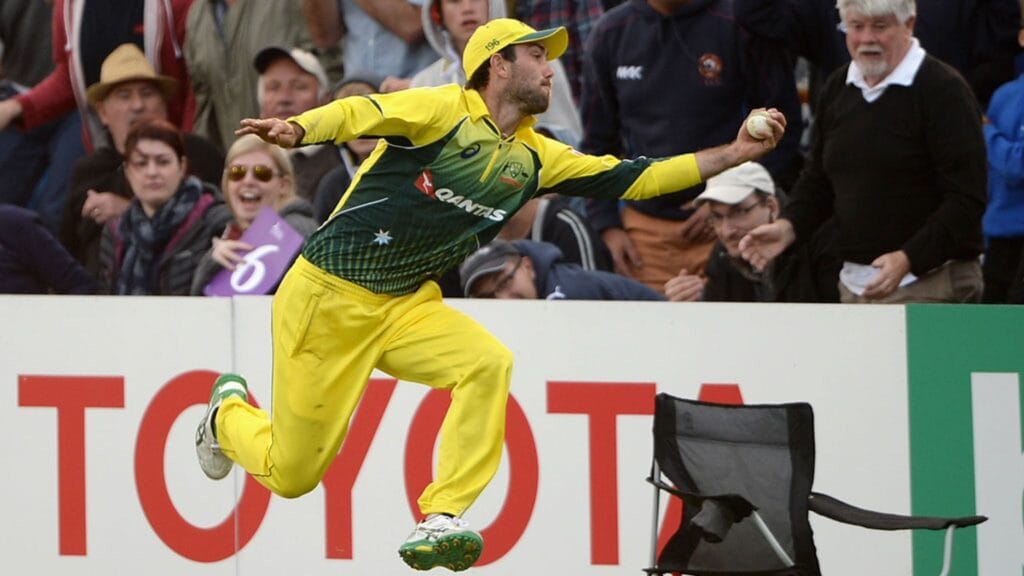
In the 2017 ICC Champions Trophy, Glenn Maxwell produced one of the most extraordinary fielding moments in tournament history with his “Superman” catch. Positioned in the deep, Maxwell leaped into the air, flinging his body horizontally to grab a stunning one-handed catch. This gravity-defying moment quickly became the highlight of the tournament and a viral sensation. Maxwell’s commitment to fielding excellence, coupled with his incredible athleticism, made this catch a symbol of modern cricket’s elevated fielding standards. It wasn’t just a breathtaking catch; it was a statement of how fielding can be just as impactful as batting or bowling in changing the course of a match.
Fielding Metrics to Watch in 2025
As we look ahead to the ICC Champions Trophy 2025, fielding will continue to be a crucial factor in determining which teams succeed under pressure. While batting and bowling often dominate the discussion, the ability to save runs, take key catches, and effect direct hits can swing a game in an instant. Here are the key fielding metrics that will be pivotal in 2025:
Run-Saving Percentage
In modern cricket, saving runs is just as valuable as scoring them. Teams that consistently save 10–15 runs per match through sharp fielding efforts often put themselves in a winning position. A run-saving percentage takes into account how often fielders prevent runs through quick stops, precise throws, and cutting off singles. Fielding teams that can consistently save those crucial extra runs add pressure on the opposition, forcing them to play riskier shots and potentially opening up opportunities for wickets. A fielding unit that can save over 10 runs per game has a distinct advantage in the fiercely competitive format of the ICC Champions Trophy.
Catches Taken
Catches win matches—a saying that holds true, especially in tournaments like the ICC Champions Trophy, where every wicket can be game-changing. Dropping key catches can prove costly, particularly in close matches where the margin of victory is razor-thin. The metric of catches taken is vital, not just in terms of quantity, but also in terms of quality. Teams need to excel in holding onto high-pressure catches, whether in the slips, the outfield, or under lights. With the rise of fielders who specialize in high-pressure catches (think of Glenn Maxwell’s iconic catch in 2017), this metric will be critical in 2025. A team with reliable hands, particularly under pressure, will always be a formidable contender.
Direct Hits
Direct hits are one of the most dramatic and rewarding feats of fielding in cricket, often leading to run-outs that completely shift the momentum of a game. In the ICC Champions Trophy, where the stakes are incredibly high, having players who can consistently hit the stumps with precision can make a massive difference. A well-executed direct hit can dismiss a dangerous batsman and break crucial partnerships. Teams with players skilled in this area, like Jonty Rhodes, have historically been more successful at executing run-outs and taking control in tight situations. In 2025, expect fielders who specialize in direct hits—whether from the deep or in close positions—to be key players in influencing the outcome of matches.
Boundary Saves
Protecting the boundary is another essential fielding metric, particularly when defending a total. Fielders positioned on the boundary line need to be agile, aware, and quick to make sure no easy boundaries are conceded. Whether it’s executing a boundary save by diving to intercept a ball or keeping the ball inside the rope while leaping over it, the ability to stop a boundary at critical moments can have a significant impact on the game. A fielder who can save 4 or 5 boundaries in a game (amounting to 16–20 runs) can swing the game in their team’s favor, especially in the high-pressure scenarios typical of ICC Champions Trophy matches. In 2025, watch for teams with a strong focus on boundary-saving, especially in the final overs, when every run counts.
The X-Factor Players for 2025
As we look ahead to the ICC Champions Trophy 2025, several players stand out as potential game-changers with their exceptional fielding skills. These players have proven their athleticism, sharp reflexes, and ability to perform under pressure. Here are the X-Factor fielding players to watch in the 2025 tournament:
India: Ravindra Jadeja & Shubman Gill
Australia: Glenn Maxwell & Steve Smith
England: Ben Stokes & Harry Brook
South Africa: Temba Bavuma & Aiden Markram
Training and Preparation for Elite Fielding
Elite fielding is an art that requires a combination of sharp technique, mental focus, and physical fitness. Teams preparing for the ICC Champions Trophy 2025 will leave no stone unturned when it comes to excelling in the field. Fielding can be the difference between winning and losing, especially in limited-overs formats, where tight matches demand precision and consistency. Here’s a look at how top cricket teams prepare to excel in fielding:
Drills and Techniques: Specialized Fielding Drills for High-Pressure Situations
To excel in the high-pressure environment of a tournament like the ICC Champions Trophy, fielding drills need to replicate match conditions and simulate pressure moments. These drills are carefully designed to enhance reflexes, hand-eye coordination, and decision-making under stress.
Fitness Levels: Importance of Agility, Speed, and Reaction Time
Fielding is a physically demanding discipline that requires top-tier fitness. In the high-pressure environment of ICC tournaments, fielders need to be quick, agile, and able to react in a split second. Fitness levels directly impact a player’s ability to perform, particularly in terms of:
Fielding Coaches: Contribution of Elite Coaches Like Mike Young and Jonty Rhodes
Elite fielding coaches play a vital role in honing the fielding skills of modern cricketers. Their experience and expertise help teams maximize their fielding potential. Coaches like Mike Young and Jonty Rhodes have made significant contributions to the evolution of fielding standards worldwide.
Conclusion
The ICC Champions Trophy 2025 is shaping up to be a tournament full of high drama and intensity, where every aspect of the game will be under the spotlight. While towering sixes and toe-crushing yorkers often steal the headlines, it’s the moments of fielding brilliance that will truly capture the imagination of fans around the world. From stunning diving catches to perfectly executed run-outs, fielding will once again be a silent game-changer that can shift the momentum of a match in an instant.
As we look forward to the 2025 edition, fans will eagerly anticipate not just the thrilling batting and bowling performances, but also those jaw-dropping fielding efforts that leave us in awe. Whether it’s a boundary saved in the final over or a direct hit from the deep, fielding will remain a key factor in determining which team lifts the trophy.
The brilliance of modern fielding—through the athleticism, skill, and determination of players—promises to shine once again in 2025. We can only hope that the tournament will deliver unforgettable moments, showcasing the true spirit of teamwork and the art of fielding in cricket. After all, in this game of inches, it’s the fielding that often makes the difference between victory and defeat.
Check out the Champions Trophy Stats
